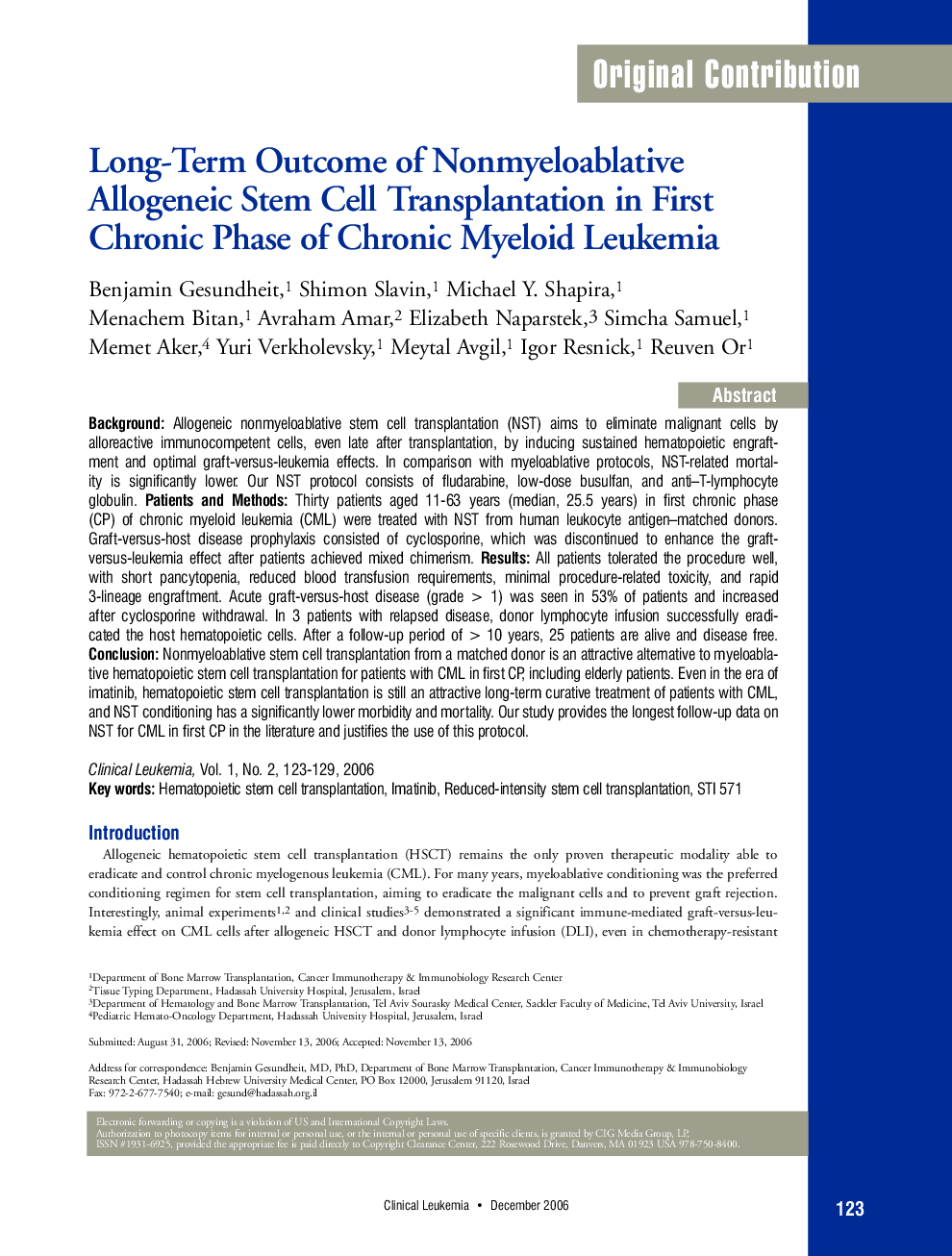| Article ID | Journal | Published Year | Pages | File Type |
|---|---|---|---|---|
| 3981096 | Clinical Leukemia | 2006 | 7 Pages |
BackgroundAllogeneic nonmyeloablative stem cell transplantation (NST) aims to eliminate malignant cells by alloreactive immunocompetent cells, even late after transplantation, by inducing sustained hematopoietic engraftment and optimal graft-versus-leukemia effects. In comparison with myeloablative protocols, NST-related mortality is significantly lower. Our NST protocol consists of fludarabine, low-dose busulfan, and anti–T-lymphocyte globulin.Patients and MethodsThirty patients aged 11-63 years (median, 25.5 years) in first chronic phase (CP) of chronic myeloid leukemia (CML) were treated with NST from human leukocyte antigen–matched donors. Graft-versus-host disease prophylaxis consisted of cyclosporine, which was discontinued to enhance the graftversus-leukemia effect after patients achieved mixed chimerism.ResultsAll patients tolerated the procedure well, with short pancytopenia, reduced blood transfusion requirements, minimal procedure-related toxicity, and rapid 3-lineage engraftment. Acute graft-versus-host disease (grade > 1) was seen in 53% of patients and increased after cyclosporine withdrawal. In 3 patients with relapsed disease, donor lymphocyte infusion successfully eradicated the host hematopoietic cells. After a follow-up period of > 10 years, 25 patients are alive and disease free.ConclusionNonmyeloablative stem cell transplantation from a matched donor is an attractive alternative to myeloablative hematopoietic stem cell transplantation for patients with CML in first CP, including elderly patients. Even in the era of imatinib, hematopoietic stem cell transplantation is still an attractive long-term curative treatment of patients with CML, and NST conditioning has a significantly lower morbidity and mortality. Our study provides the longest follow-up data on NST for CML in first CP in the literature and justifies the use of this protocol.
